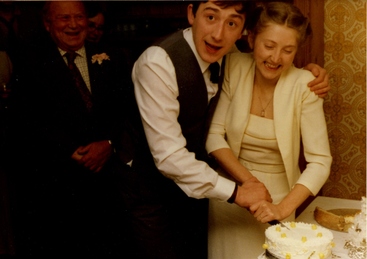 Cutting the cake!
Cutting the cake! We got married in 1980. We had shared a home in Islington for several years by then. We just decided one night that it was time to get hitched, shook hands on it, and wasted no time in putting our plans into action! We got in touch with the Minister of Capel Kings Cross, a Welsh Congregationalist chapel on Pentonville Road, to fix a date. We were invited to attend two services at the Capel, and shared a very friendly cup of tea afterwards in the basement with the regulars. We then got on the blower (no mobiles or internet!) to invite our friends and family. We didn’t get round to printed invitations! We didn’t have a large income – Martin was working as an actor, mostly theatre, and I was working as PA to a theatrical agent in the daytime, and waitress/barmaid/box office evenings at the Kings Head Theatre Club round the corner.
I already had a wedding ring – Mum had given me her original wartime ring when I was fourteen when Dad bought her a new one – and an actress friend of mine gave me an intro to a number of rag-trade contacts she had. I found a pretty dress at a trade price of £10, and a pair of cream shoes at Chapel Market in Islington. A friend who shared the house with us French-plaited my hair for the wedding and I had no make-up – I was 23 years old and had been a teenager in the 70s, at which time young women didn’t go in much for cosmetics! My sister Caroline (pregnant at the time) was my matron-of-honour and wore her own flower print dress.
We put on a spread, again helped by friends and family, in the basement of our rented house. We bought a home-cooked ham from Chapel Market, sliced meats and quiches from the nice sandwich-bar near my work place off Baker Street, and made ratatouille, potato salad, and other party foods at home. My in-laws (and Martin!!) spent the evening before the wedding cooking chicken portions while I went out to Joe Allen’s in Covent Garden with my sisters and mother for a girls’ night out! Mam and Aunty Olwen brought the wedding cake up from Wales. The local pub lent us glasses, and we bought the wine and beer wholesale. We had sparkling white for the toast. In those days, champagne wasn’t available discounted at supermarkets.
A friend drove us to the chapel and back, so no wedding-limousine needed either! The orders of service were printed by my father-in-law, and in a typically generous Welsh gesture, given to us gratis by his employers Ty John Penry Press of Swansea. My boss at the time kindly offered to take the wedding photos.
Friends and relatives travelled up from Wales, from Spain, from the USA, and if anyone had looked up at the large first-floor window of our flat, it must have looked like a tightly-packed goldfish bowl! A hundred and twenty guests sat with their paper plates and cutlery on their laps or squeezed together with new friends and drinks in their hands.
Many people said to us afterwards that it was the best wedding they’d ever been to – relaxed, friendly, and great food! By 9pm there was a good-natured singing stand-off between the English and the Welsh which ended with most of the guests de-camping to the Prince Regent opposite, and by the end of the night, when Martin came up to our bedroom after a last look round the flat, he found me (in my bridal chamber as ’twere) surrounded by
late-stayers, still laughing and chatting!
I think, as I recall, my parents gave us £150 towards the wedding expenses, augmented on the day by my sister Liz, who, following Catalan tradition, cut the bridegroom’s tie into pieces and took them round on a plate, selling bits off to the guests.
We hadn’t planned a honeymoon as such, but we did have two Persil tickets. These were an offer, very unusual in those distant days when buy-one-get-one-free was unheard of, whereby you saved up tokens from packets of Persil washing-powder, and sent off for a Persil ticket. This enabled you to have two rail tickets for the price of one to anywhere in the UK.
Martin thought we might take our bicycles to Inverness. His Dad had been there in the war and Martin remembered him saying it was flat. So, after spending a day clearing up after the party, we got on our bikes (sit-up-and-begs with no gears), wearing walking boots, with cycling capes and army-surplus rucksacks, and waved goodbye to our housemates. Apparently, they told us later, they had only just been able to conceal their mirth until they closed the front door. We caught the night-sleeper from Kings Cross, spending the first night of our honeymoon on bunk-beds, and waking to see the purple heathery slopes of Scotland!
We hadn’t planned anything much (the confidence of youth!) or booked ahead – we stayed in bed and breakfasts as we cycled round Loch Ness. It took us almost all of the first day to get the first six miles to Drumnadrochit, battling against a ferocious wind funnelling up the Loch in our direction. And it wasn’t flat (Martin disremembered!). But we were also extremely lucky – that week in early March was mostly fine, whereas the week after our return brought heavy snow.
I have to say that we had a great wedding and honeymoon, and I’ve never felt the slightest bit of envy about anyone else’s. And since we had our wedding in central London, it meant that for most of our friends and family, it was possible to attend without taking precious holiday time or needed money to travel to a foreign destination.
We didn’t have a wedding-present list – 1980s consumerism and Thatcherist ideals were yet to come, and we were grateful for the modest gifts, some of which have worn out now, but many are still with us. We have a very nice Norman Rockwell plate from an American friend, and a pair (Lion and Fish –Leo and Pisces) of water-pistols from another New Yorker. To this day, we haven’t used them as weapons – so far, so good!
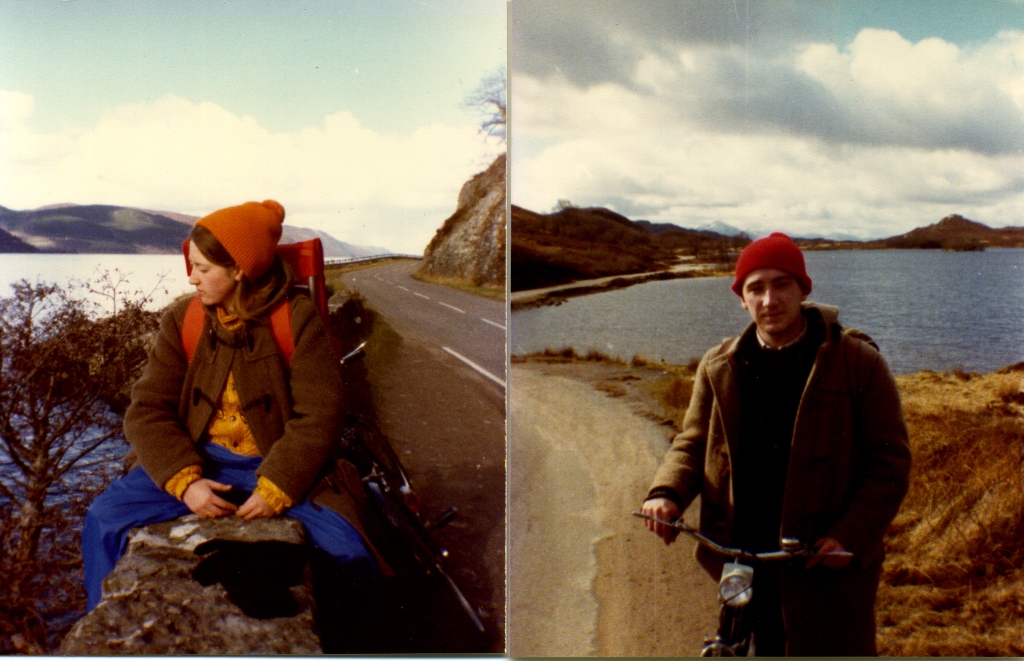
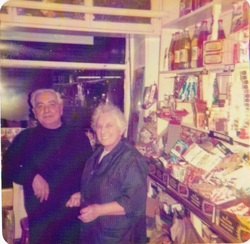
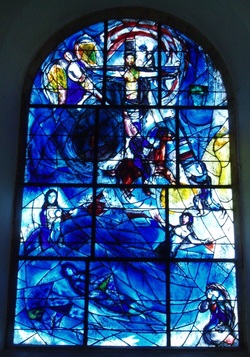
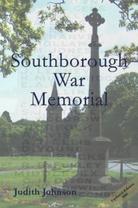
 RSS Feed
RSS Feed
